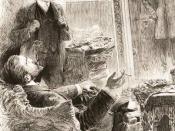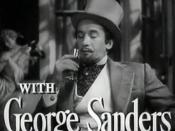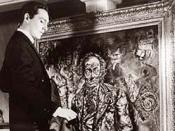Symbolism in The Picture of Dorian Gray
The Picture of Dorian Gray, by Oscar Wilde, is a classic tale of good verses evil. The main character of the novel is Dorian Gray. At first, Dorian is a young, handsome, sweet, and gentle boy. He meets Basil Hallward, a painter, who becomes infatuated with him. Basil is the good, symbolically Christ-like figure in the story. He is in love with Dorian's beauty and good nature. It is Basil who makes the mistake of introducing Dorian to Lord Henry Wotton, the devil-like tempter.
Wotton is a bit of a troublemaker. He wants to be an amoral member of society, but he has not the courage to do it himself. He sees in Dorian something similar to what Basil saw in Dorian and that is a canvas with which to work on. When Basil paints a wonderful picture of Dorian, Lord Henry decides that he will mold Dorian into someone who cares only about pleasure and beauty.
He tells Dorian that, "Youth! Youth! There is absolutely nothing in the world but youth!" (Wilde 28). Lord Henry is symbolic of evil or the devil. It is Lord Henry that puts the seed of vanity into Dorian. Lord Henry is the one who causes Dorian to only care about himself and to realize that although the painting of him would never age, he himself would. It is also, Lord Henry who trivializes Dorian's role in Sibyl's death. When Dorian first hears of Sibyl's death he feels responsible for it (at least indirectly). When Lord Henry gets through talking about the situation, Dorian begins to believe that he had nothing to do with it. Dorian becomes indifferent to his part. This is the beginning of
the downfall of Dorian Gray. By this time,



Dorian gray
This is a wonderfully written essay. I would certainly dispute the final sentence when we look at competition like Paradise Lost and Frankenstein, which seem more rounded
3 out of 3 people found this comment useful.